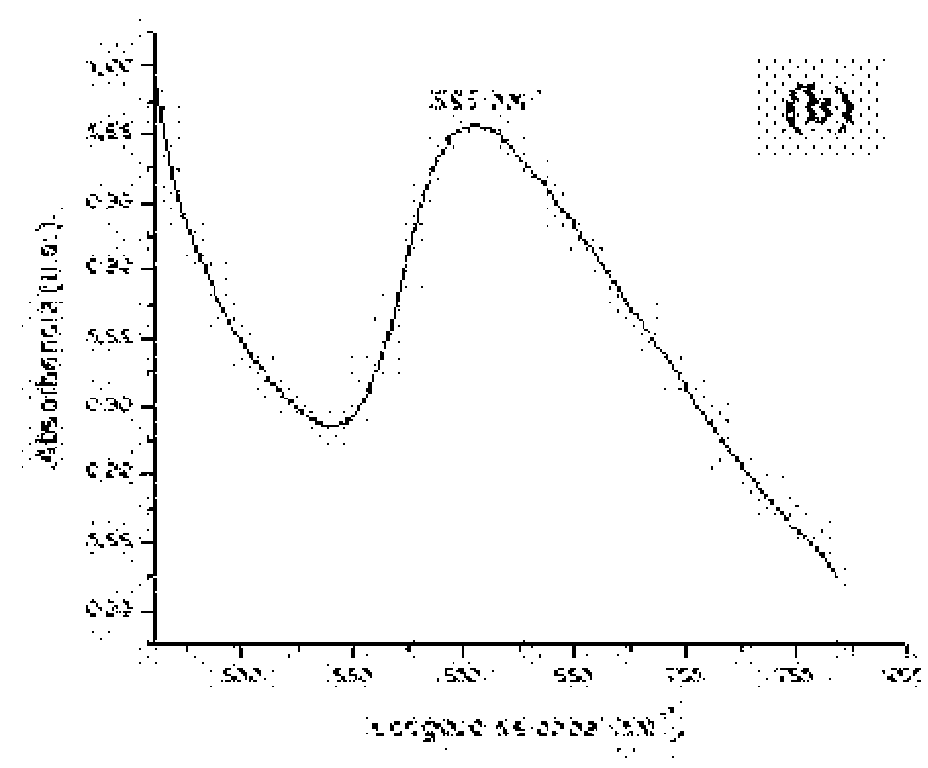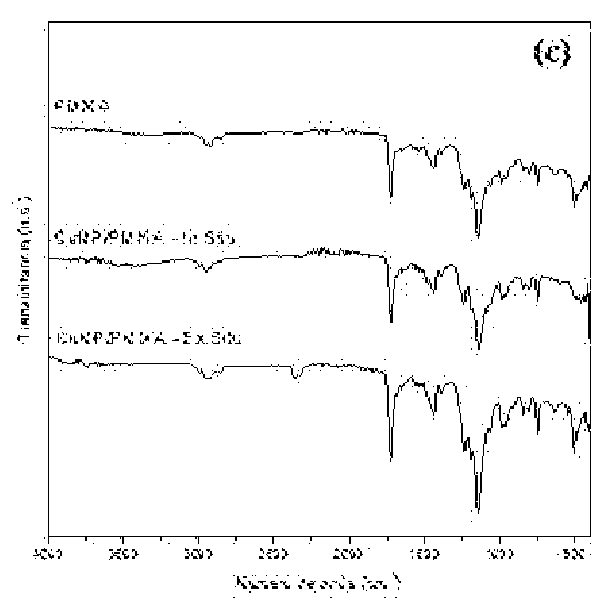Preparation process of dental and orthopedic acrylic materials with antimicrobial properties using copper nanoparticle technology
a technology of dental and orthopedic acrylic and nanoparticles, which is applied in the direction of biocide, impression caps, transportation and packaging, etc., can solve the problems of poor cleaning habits, undesirable side effects for patients, general discomfort, and a particularly unpleasant taste, and achieves a high area/volume ratio, easy assimilation into microorganisms, and the effect of reducing the number of patients
- Summary
- Abstract
- Description
- Claims
- Application Information
AI Technical Summary
Benefits of technology
Problems solved by technology
Method used
Image
Examples
example 1
[0096]In this example, the preparation of CuNP / PMMA nanocomposites consists of an in-situ synthesis of the nanocomposite material using either self- or heat-curing polymerization. Aqueous solutions of copper acetate [Cu(CH3COO)2] of different concentrations (0.1-0.8 M) are used, preferably between 0.6-0.7 M, for which 100 μL of the copper solution (Cu2+) is added over 2 mL of absolute ethanol. The resulting mixture is added 2 mL of the self- or heat-cured liquid methyl methacrylate dental monomer under constant agitation. The resulting solution is kept under constant agitation at temperatures between 50-70° C. until nanoparticles form (CuNP), which can be seen by the reddish coloration of the reaction mixture. This liquid monomer solution loaded with CuNPs is then mixed with dental acrylic powder in a 3:2 ratio of acrylic mass:monomer volume (PMMA) to carry out the polymerization reaction under self- or heat-curing conditions as appropriate.
example 2
[0097]In this example, the preparation of CuNP / PMMA composites consists in the use of enveloped CuNPS. The composite material was prepared using CuNPs previously enveloped in ceramic material particles. The use of CuNPs included in ceramic particles could improve the staining properties of the composite as well as provide different copper release kinetics from the material. Furthermore, the ceramic nature of the support makes its density lower than that of metallic particles, helping to address stability and decantation problems. Zeolite particles (nanoporous crystalline aluminosilicate) and silica nanoparticles were used as support materials, using natural zeolite of national origin (MOR) and commercial 100 nm silica nanoparticles. CuNPs are formed on site in the material, whereby a certain MOR mass was contacted with a 0.1 M copper acetate solution for 24 h at room temperature. Once the ion exchange period was completed, the zeolite was separated and washed by repeated centrifugat...
example 3
[0099]In this example, the preparation of CuNP / PMMA composites consists of an ex-situ method to incorporate CuNP in self- or thermo-cured dental acrylics, using commercially available 5 nm CuNPs in powder form (Nanotec SpA, Chile). The CuNPs were added to the liquid self- or thermo-cured methyl methacrylate monomer (4 mL). CuNPs masses were in the range of 0.79-6.28 mg, dispersed in ultrasound for 10 minutes and then mixed with dental acrylic powder in a proportion of 3:2 acrylic mass / monomer volume (polymethylmethacrylate with incorporated initiator) to achieve the polymerization reaction. Polymerization was subsequently performed under self- or thermo-curing conditions.
PUM
| Property | Measurement | Unit |
|---|---|---|
| Temperature | aaaaa | aaaaa |
| Temperature | aaaaa | aaaaa |
| Fraction | aaaaa | aaaaa |
Abstract
Description
Claims
Application Information
 Login to View More
Login to View More - R&D
- Intellectual Property
- Life Sciences
- Materials
- Tech Scout
- Unparalleled Data Quality
- Higher Quality Content
- 60% Fewer Hallucinations
Browse by: Latest US Patents, China's latest patents, Technical Efficacy Thesaurus, Application Domain, Technology Topic, Popular Technical Reports.
© 2025 PatSnap. All rights reserved.Legal|Privacy policy|Modern Slavery Act Transparency Statement|Sitemap|About US| Contact US: help@patsnap.com



